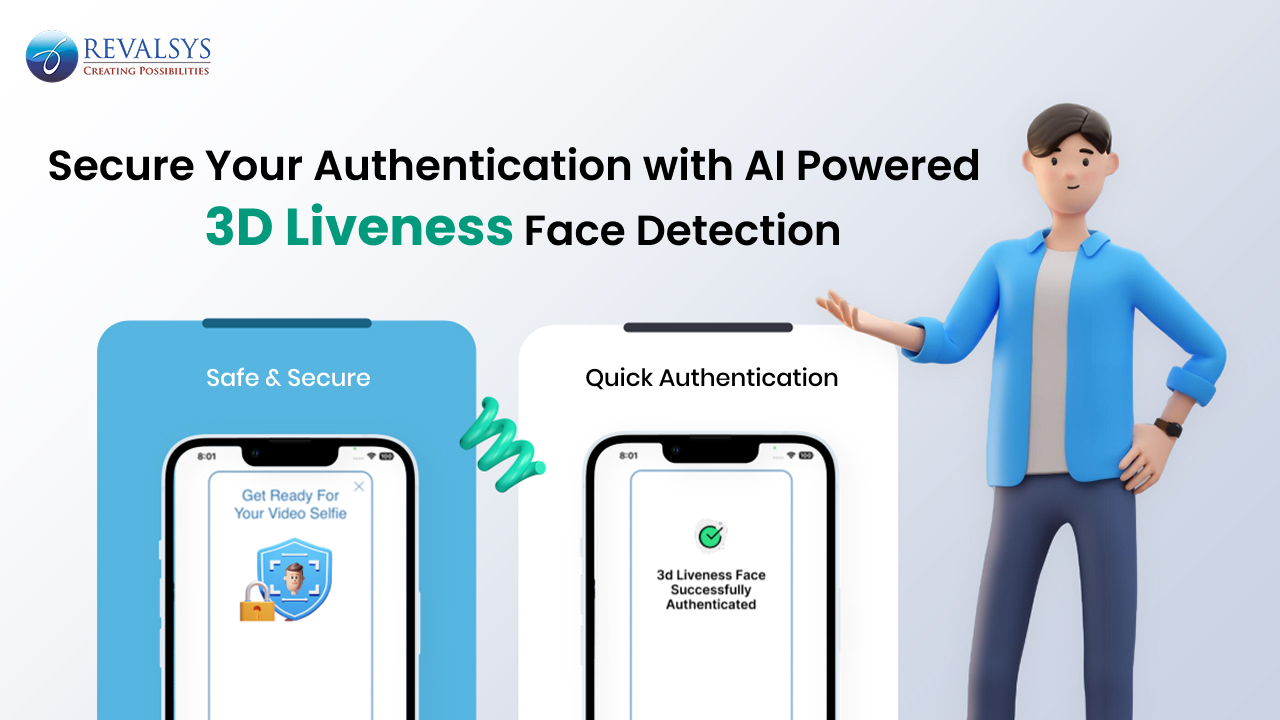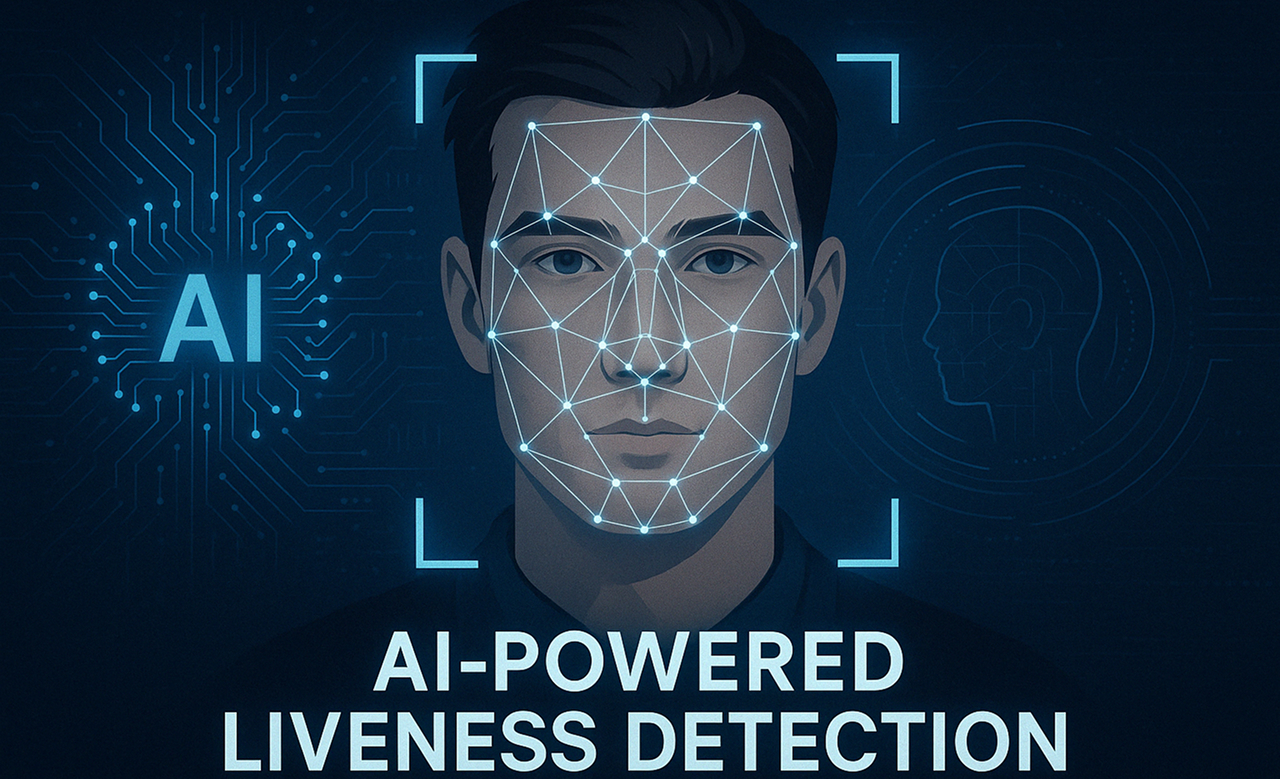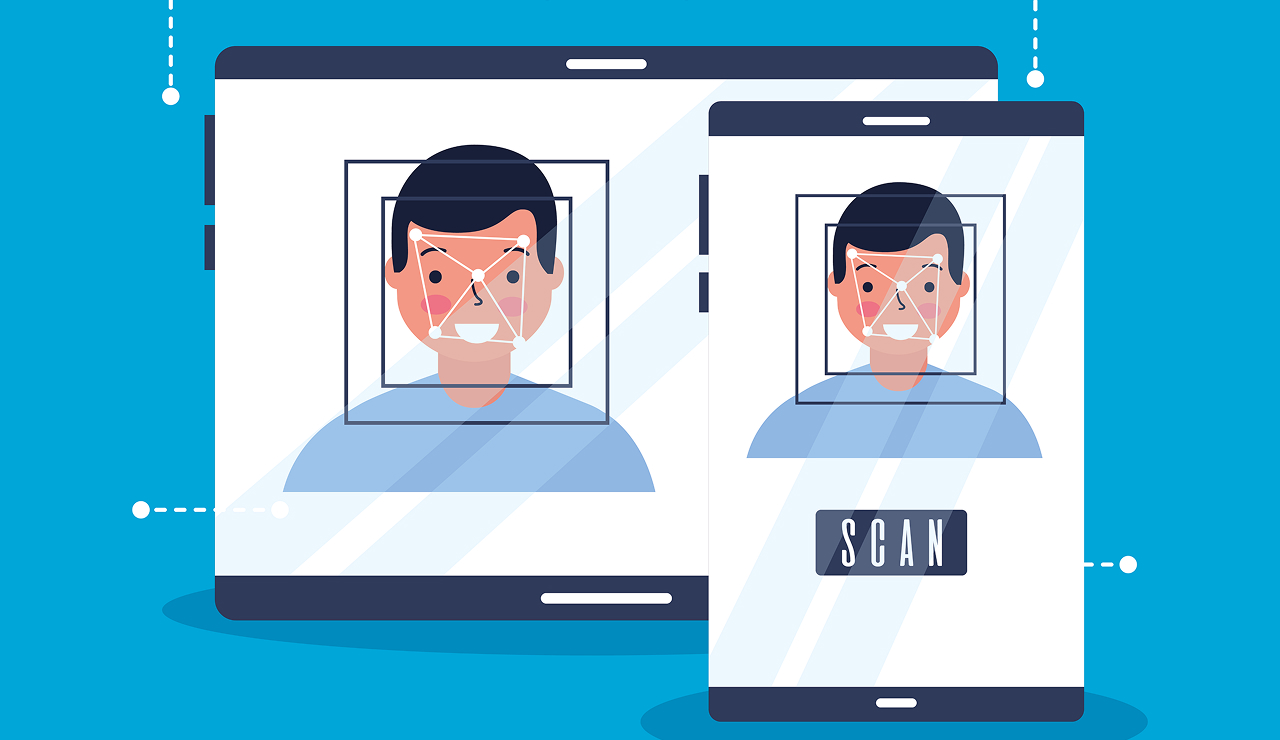
Beyond the Surface: How AI-Powered 3D Liveness Detection Keeps Your Identity Safe
Imagine unlocking your phone with just a glance — but so can someone else do with a photo of your face. Scary, right? In present World where everything from banking to boarding flights is done digitally, simply recognizing your face isn’t enough. What we need today is not just facial recognition — we need to know that it’s really you, live and in person.
Welcome to the next frontier in digital security: AI-powered 3D Liveness Detection.
This technology goes far beyond surface-level scans. It uses advanced sensors and intelligent algorithms to tell the difference between a real, living human and a clever fake — whether it’s a printed photo, a doll, a replayed video, or even a lifelike mask.
In this guide, we’ll break down how 3D liveness detection works, why traditional face recognition falls short, and how AI is transforming identity verification into a smarter, safer, and more foolproof system.
Let’s dive in and explore how this invisible layer of defense is quietly reshaping the future of authentication — one secure glance at a time.
What Is 3D Liveness Face Detection?
 3D Liveness Face Detection is a security technology with AI enabled that confirms a real, live person is in front of the camera — not a photo, video, or mask.
3D Liveness Face Detection is a security technology with AI enabled that confirms a real, live person is in front of the camera — not a photo, video, or mask.
Unlike regular facial recognition that matches a flat image of your face to one on file, 3D liveness detection goes a step further, it analyzes the actual shape, depth, and natural movements of your face to make sure you’re really there.
The Evolution of Authentication Landscape: From Passwords to Pixels
To understand why advanced technologies like 3D liveness detection are becoming necessary, it’s important to look at how authentication methods have evolved over time — and where their weaknesses lie.
1️. Knowledge-Based Authentication:
This is the most traditional form of authentication. It relies on information only the user should know — like passwords, PINs, or answers to security questions. While easy to implement and familiar to most people, it comes with major security risks.
Main issues include:
- Easy to guess or steal (especially with weak or reused passwords)
- Vulnerable to phishing attacks (fake emails or websites that trick users into revealing their credentials)
- Exposed in data breaches, allowing attackers instant access
- Difficult for users to manage multiple strong passwords
Over time, these limitations have shown that knowledge alone is not enough to protect sensitive accounts or data.
2️. Possession-Based Authentication:
To improve security, systems started using physical devices or digital tokens as a second layer of protection. This includes things like security key fobs, authenticator apps, and one-time codes sent via SMS or email.
While more secure than passwords alone, they have their downsides:
- Devices can be lost, stolen, or damaged
- SMS codes can be intercepted using techniques like SIM swapping
- Adds extra steps to the login process, which can frustrate users
Possession-based methods improve security but also increase complexity — and aren’t foolproof against modern cyberattacks.
3️. Inherence-Based Authentication:
This is where biometrics come in — using unique biological traits such as your fingerprint, iris, voice, or face to confirm your identity. These methods are fast, user-friendly, and hard to forget or misplace — because they’re part of you.
Benefits of biometrics:
- Highly convenient and contactless (especially facial recognition)
- Tied to unique physical characteristics
However, early versions of biometric systems had their challenges:
- Accuracy could vary due to lighting, background noise, or camera quality
- Privacy concerns about storing sensitive biometric data securely
- Spoofability — especially in facial recognition, where basic systems could be tricked by: Printed photos, Videos played on screens. Face masks or dolls & replicas
Facial recognition gained popularity due to its contactless nature and the ubiquity of cameras on smartphones and laptops. But the ease with which a printed photo or a video on a screen could fool early systems exposed a critical flaw: they couldn’t distinguish between a live person and a representation of a person.
The Spoofing Menace: Why Liveness Detection is Crucial
Spoofing attacks, also known as Presentation Attacks (PAs), are attempts to subvert a biometric system by presenting a fake biometric sample. For facial recognition, common PA methods include:
- Print Attack: Presenting a high-quality printed photograph of the authorized user.
- Replay Attack: Playing a video recording of the authorized user on a digital screen (phone, tablet).
- Mask Attack: Using 2D paper masks or even sophisticated 3D masks mimicking the user’s face.
- Deepfakes: AI-generated realistic videos or manipulated images designed to fool the system.
- Injection Attacks: Bypassing the camera feed entirely and injecting pre-recorded or digitally generated data directly into the system’s processing pipeline (more sophisticated but highly dangerous).
These attacks undermine the very purpose of biometric authentication. If a system can be fooled by a readily available photo from social media or a simple video recording, it offers a false sense of security. This led to the development of Liveness Detection (also known as Presentation Attack Detection or PAD).
The Power Couple: AI and 3D Liveness Detection
 While capturing 3D data is crucial, interpreting it accurately and distinguishing subtle spoofing attempts requires significant computational power and intelligence. This is where Artificial Intelligence (AI) and Machine Learning (ML) become indispensable.
While capturing 3D data is crucial, interpreting it accurately and distinguishing subtle spoofing attempts requires significant computational power and intelligence. This is where Artificial Intelligence (AI) and Machine Learning (ML) become indispensable.
AI algorithms are trained on massive datasets containing:
- Real, live faces: Captured under various conditions (lighting, poses, expressions).
- Spoof attempts: Including photos, videos on different screens, 2D masks, 3D masks (various materials), and potentially even deepfakes.
Through this training, AI models learn to identify the complex, multi-faceted characteristics that define a live human face in 3D space. Here’s how AI enhances 3D liveness detection:
1. Sophisticated Depth Map Analysis: AI algorithms don’t just see a depth map; they analyze its consistency, checking for anomalies that might indicate a mask (e.g., unnatural edges, incorrect curvature around nose/eyes) or the inherent flatness of a photo/screen. They can compare the generated 3D model against expected human facial geometry.
2. Fine-Grained Texture and Detail Examination: AI excels at identifying subtle textures unique to human skin (pores, fine lines, blemishes) that are difficult to replicate perfectly on masks or prints. It can also analyze how light reflects and scatters off the skin versus artificial materials or screen surfaces, even considering subsurface scattering unique to skin.
3. Micro-Movement and Physiological Sign Detection: Human faces are never perfectly still. AI can detect involuntary micro-movements:
- Subtle head movements: Natural, slight oscillations.
- Involuntary eye movements/blinks: Analyzing the dynamics and frequency.
- Facial muscle twitches: Minor, unconscious movements.
- Pulse detection (advanced): Some systems use AI to detect subtle skin colour changes caused by blood flow (photoplethysmography or PPG), a definitive sign of life. AI models are trained to distinguish these natural, subtle, and often chaotic movements from the artificial stillness of a photo or the more predictable movements in a video replay or puppeteered mask.
4. Multi-Modal Fusion: AI can intelligently combine data from multiple sources – the 3D depth map, the 2D colour image, texture analysis, and movement detection – weighing each factor appropriately to make a highly reliable liveness determination. It learns the correlations between these different data streams that signify authenticity.
5.Continuous Learning and Adaptation: As new spoofing techniques emerge (like hyper-realistic masks or advanced deepfakes), AI models can be retrained on new data, allowing the liveness detection system to adapt and stay ahead of threats. This adaptive capability is crucial in the ongoing cat-and-mouse game between security systems and attackers.
6. Anomaly Detection: AI can identify patterns that deviate significantly from the norm of a live human interaction, flagging potential injection attacks or unusual presentation methods even if they weren’t explicitly part of the training data.
Essentially, AI acts as the intelligent brain interpreting the rich, multi-dimensional data captured by 3D sensors (or inferred from 2D sensors). It moves beyond simple checks to a holistic understanding of what constitutes a “live” human presence in three dimensions.
Why This 3d liveness detection Matters More Than Ever
As identity theft, digital fraud, and cybercrime grow more advanced, relying solely on facial recognition without verifying “liveness” leaves users and businesses dangerously exposed.
AI-powered 3D liveness detection strengthens digital trust by ensuring:
- Only real people get access
- Spoofing attacks are blocked
- Security doesn’t come at the cost of convenience
From fintech apps and secure logins to airport gates and eKYC platforms, this technology is already being used to protect millions of identities — quietly and effectively — in the background.
Conclusion: The Future of Identity Is Alive and Real
As the line between real and fake becomes blurrier in the digital world, authentication must evolve. It’s no longer enough to match a face — we must verify that the face is live, present, and human.
AI-powered 3D liveness detection is more than a security upgrade — it’s a foundational shift toward trustworthy digital identity.
Whether you’re a user wanting frictionless security, or a business looking to protect your systems and reputation, 3D liveness detection delivers what today’s world demands: Fast, smart, secure authentication that goes beyond the surface.
